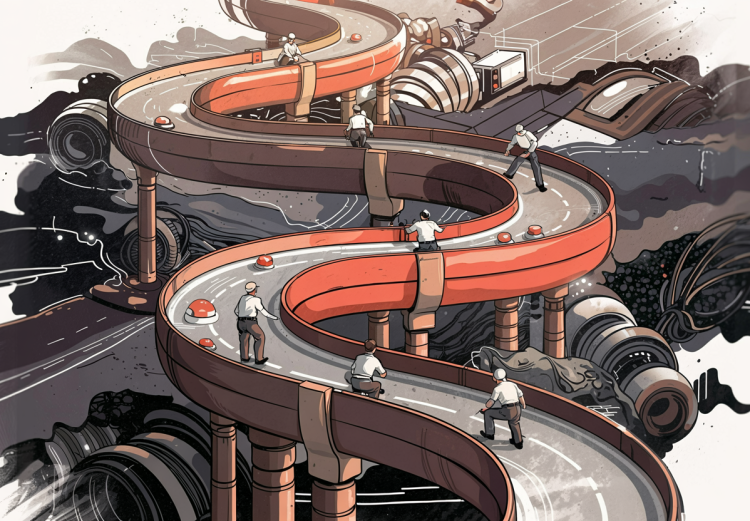You’ve got a smart team. A solid process. Clear goals. But something still feels off. Work moves—but not fast enough. Delivery drags. Tensions rise. Chances are, you’ve got bottlenecks hiding in plain sight.
The good news? They’re fixable—if you know what to look for. Let’s break down where they hide, how to spot them, and how to fix them without blowing up your entire process.
What Makes Bottlenecks So Hard to See?
Busyness Can Hide Slowdowns
Everyone looks busy. Boards are full. Meetings are packed. But that doesn’t mean work is flowing. Busyness is not a sign of progress—it’s often a sign of stuck work. When people are busy but nothing’s moving, a bottleneck is probably lurking.
Most Teams Optimize for Activity, Not Flow
Teams often celebrate outputs—tickets closed, hours logged, meetings attended. But real progress happens when value moves through the system. If no one’s tracking that, bottlenecks stay hidden.
Bottlenecks Often Live Between Roles, Not Inside Them
The slowest parts of product development aren’t always in a single function. They often live in the handoffs—between product and design, or dev and QA, or legal and engineering. That’s where work waits. And waits. And waits.
Common Hidden Bottlenecks to Watch For
Endless Handoffs and Context Switching
When every piece of work needs five handoffs, it loses momentum. Add in context switching—people juggling five projects—and you get:
- Missed details
- Slower feedback loops
- Mental fatigue
It’s not the work—it’s the friction between the work.
Waiting for Approvals or Access
Every time a ticket pauses for:
- A stakeholder decision
- A compliance sign-off
- Access to a system
…you lose time. These small delays often stack up more than actual development time.
Overloaded Subject Matter Experts or Architects
If your team has one person who’s the gatekeeper for decisions, architecture, or knowledge, they become the bottleneck. Not because they’re slow, but because they’re overloaded. It creates delay—and tension.
How to Spot a Bottleneck in Real Time
Look for Work That Piles Up Without Progress
Scan your board. Where do things sit the longest? Work in progress that’s stuck in review, QA, or “waiting on someone else” is a red flag. If something sits idle longer than it moves, that’s your signal.
Notice When Priorities Constantly Shift or Stall
Shifting work isn’t always a strategy—it’s sometimes a symptom. If teams are starting but not finishing, you’ve got a constraint somewhere downstream that’s causing churn.
Ask Teams Where the Friction Really Lives
Ask directly:
- “What part of this process feels slower than it should?”
- “Where does work tend to stall?”
Your team knows—they just need the space (and permission) to tell you.
How to Fix Bottlenecks Confidently
Visualize the Workflow to Make Blockers Obvious
Use a simple kanban or flow map. Track how long items sit in each column. Make wait times visible. Once it’s visible, it becomes actionable. No more guessing.
Reduce Dependencies Where You Can
Do teams need to wait for another group—or could they self-serve? Add documentation, grant read access, empower local decisions. Every dependency you eliminate increases momentum.
Create Slack (Yes, Really) to Absorb Delays
Overloading teams makes bottlenecks worse. Build in slack so people can:
- Jump on stuck work
- Support each other
- Reduce idle time
Slack is not waste—it’s capacity to unblock and adapt.
Fix the Flow, Not Just the People
When things slow down, it’s easy to blame individuals.
- “They’re too slow.”
- “They’re not efficient.”
- “They missed the deadline.”
But most slowdowns aren’t people problems—they’re system problems. Look for flow. Look for friction. Fix the parts between the parts. Because when you improve the system, everyone gets faster. And the work finally moves—how it should.


